Last Updated on August 5, 2021

It began with Edgar Rice Burroughs. JOHN CARTER is a classic tale of a stranger in a strange land, one with people far different from him, and one that has serious potential to make for an incredible motion picture. While on our visit to San Francisco to get an early glimpse of the film, the footage this group of on-line writers was shown certainly held quite a bit of promise.
In part two of our Edit Bay visit, we sat in for a fascinating – and sometimes rather technical – Q and A session regarding the upcoming film. One thing is for sure, director Andrew Stanton has a passion for this project and it is clear that he is taking serious care to make it work. Will he succeed? Most of us won’t find out until March 9, 2012. However, after witnessing a few solid minutes, their version of John Carter on Mars looks and feels like a solid and thrilling action yarn.
The Q and A session started off with talk of the trailer…
Andrew Stanton
Andrew Stanton: We were not nice citizens — we kept saying it wasn’t good enough. It felt like other trailers; it felt like other movies. Steve Jobs told me a great thing once: “You only make a first impression once.” So we kept holding on until we had a trailer that we represented what it felt like we wanted. We finally nailed it, so I’m happy that it took this long.
What was the song in the trailer?
AS: That is Peter Gabriel doing a cover of Arcade Fire — cool on cool.
Did you find that in the construction of the trailer, it was imperative to not have a lot of close-up “here’s everything” moments?
AS: Yes, I hate that. I feel that the audience is smarter than that. They’ve heard me rant this way too many times, but I said, “Give them some credit.” I now hear anybody — I don’t care what their age is, what their demographic is, where they come from — when they show a trailer with everything in it, I hear somebody whispering, “Well, that’s the whole movie; it must not be good.” All people see when they see that is you’re not confident in what you have and you’re afraid. You assume your audience is dumb or won’t get it. If I have any say in it, I don’t want to go with that. I’ve been teased way too many times very successfully for most of my career and my youth to know that it can be done, and it can be done every time. It ends up being sometimes a reflection of the people doing that they can’t do it, so they point at others. We say we want you to see more, but we actually don’t. We just want you to have a little bit of a sense that we won’t be wasting our time to go on the air.
People have an innate understanding of the mechanics of gravity from living within it. Do you find that you have to be careful about conveying that in the way where it parses logically for our standard perception of gravity?
AS: Yeah, that’s why I did the whole teaching scene. I felt that I had to teach you that it was different and that it was not easy, and he stays awkward for quite a while.
Can you talk a little bit about the fact that this is not 3D, and was there a lot of talk —
AS: It’s not 3D in the shooting of it; I have no say over whether it’s 3D in the release of it, as far as whether they do prints there.
So you’re saying it’s an ongoing decision?
AS: No, I think they’ve made their decision. It’s going to be 3D.
Jim Morris: For a lot of reasons it isn’t 3D out the gate, and it became — especially with some of the international characters — became more and more important as they’re opening up. It wasn’t something we’d started out with, but when it became evident that we needed to go that direction, fortunately Disney supported an elaborate and expensive approach to create a stereo version of the film. There’s so much CG in it that we have a lot of 3D elements already that we can do stereoscopic views of. Then the challenge was how do you create dimension with the 2D elements? Your human characters that you shot flat, and we’re going through a pretty elaborate process of making geometry and making 3D characters of them… We were fortunate to be able to pull in Bob Whitehill, who’s our Pixar stereographer who has immaculate taste in this and it gives it some dimensional feel: It’s not spears-chucked-in-your-face moments.
AS: Fortunately Disney supported in a way to do a really great version of it, even though it wasn’t something we had gone out the gate to do.
JM: Yeah, I’ve got to give them credit: They didn’t force it on me. It was hard enough to leap to this medium and learn all these other things, and it was the same reason I didn’t do it on ‘Wall-E’: It wasn’t that I was so against it; it was more like I have enough to worry about — I’m worried that it will be one more plate to distract me from trying to get the job done. It may just be the limitations of my brain, but it was the most I could handle.
Is Edgar Rice Burroughs actually a character?
JM: He is in the books, so he is in the film.
When you’re working on a work of fiction which is from the early 1900s and that depicts an era even prior to that, these are obviously different eras in terms of gender politics and racial sensitivity. Have you felt yourself slightly massaging the tone and tenor of the novels?
AS: Yeah, I wasn’t going to go into places that were going to cause controversy. I didn’t see the need to. That’s been an ongoing debate with the subject matter ever since it was written. I didn’t need to put my foot in that pool, so I’ve made sure to steer clear. There was really no need to.
Are you going to Comic-Con?
MA: No, you came here.
What you just showed us was fantastic. I’m wondering if there was ever thought to showing that kind of presentation?
AS: I may be totally wrong on this, but I am done with hearing about stuff early out. As a fan, I just want to hear about it just as much, and I want to hear about it within a timeframe that I can do something about it and go see it.
So we should all hold our stories until February?
AS: I can’t control that. I feel like the real courageous people are going to be the people that can be patient in the future, if not now — in anything. Patience is not a commodity that’s easily come by anymore. It’s dwindling more and more. If you’re going to give credit where credit is really due, come on: You got in line and waited hours because you didn’t know what was going on for most of your youth. We’re part of the problem as much as we’re part of the people that are lauding the very things we love and want them to be out there. I’m trying to balance that so that it doesn’t look stubborn, it doesn’t look like we don’t have something. There’s a certain element of showmanship that I really was thankful for growing up… I want just enough, but I don’t want too much. It’s all a guessing game; you just don’t know what’s going to be at Comic-Con. I didn’t want to get lost in the noise, and I wanted you guys to be able to focus on it and enjoy it.

How careful/aggressive do you have to be when you have already planned for 3 films coming right out of the gate?
AS: Yes and no. You’ve got to know something’s out there. The boxed-in world I’ve been in from Pixar for 20 years is — we only have one mantra from Steve Downs, which is just “Make it good.” Everything else you’re worrying about will come if you make it good. There’ll be missed opportunities; there may be things that feel like you could have taken advantage of more; there could be bad first impressions you might make, but really all you have control over is how good you make it. That’s really where I want to put most of my efforts and not get distracted by how much or what’s been put up there. I’m always going to be like, “How little do we have to put up?” I care about everything after you’ve gone to the theater. I’m not in it for the 6 months now. I know I have to be able to make sure people will even go, but I am a believer that if something is really good that people will get to it and they’ll flock to it. Whether it happens on the schedule on the box office meter that everybody else would like it to, I don’t have that control of that. Maybe if you pull it out now, you pull it out a year from now, 10 years from now, 15 years from now, 50 years from now, you still might want to watch it. I’m grateful for those movies every day. That’s the only game I’ve been in, and that’s how I’ve been taught. I may even be a really horrible strategist on how to front-load these things, but I have to go with my gut as a moviegoer, and my gut is I want just enough to get a sense of what I think the film print is, get enough insurance that I don’t think it’s going to suck, and then you got me and I’ll go. That’s about how I’m going to play it, as much as I can control it.
I wonder how strong the movie commitment to make the 3D has —
AS: Strong enough that they said yes to optioning the first 3, but I think they’re just being prudent, and I would be too. This may not be everybody’s cup of tea; you’d still make it great and nobody wants to go. I’m not waiting for a green light to be working on everything in case we go forward, so nothing’s going to be affected creatively for it in a bad way. I get the logistics of it: This is not a cheap franchise, and it’s not a cheap world. To do it right, you have to go balls out.
You come from an environment where a lot of the creative process happens in the post-production. I was wondering, I heard you did a screening at Pixar and there was a bunch of reshoots. It sounds like you’re bringing that process to this.
AS: It’s been interesting to compare apples to oranges now that we’re out there. I’ve always seen live action as the adults: They really get to make the movies, and we’re just kids here doing our little thing. I’ve always wanted to give it the intelligence and everything. That’s a bad trap you fall into, and the shocking thing when I got out there was like, “Oh my god, we actually know how to do it better on a lot of things back here.” I think some of that isn’t because people are bad at their job but that people are stuck in a certain way that it’s always been done. You can say that about any system. Pixar had this luxury of being ignorant and young and not knowing how it’s done. We saw from afar how we thought movies were made, and we used logic — turns out that’s not used that often.
Then the other advantage is we have a pseudo-studio system of the modern era: We have the same people working together again and again and again. It’s like having the same team players on the same sports team for 20 seasons. You get really good at all the things that you would never value: How information is brought across to things, how things are delegated. The simplest, most mundane things have been honed down to their most efficient and smart way of what’s best for the film thinking. I saw nothing but improvement everywhere I went once I left this building — it was overload. One of the other things that I realized is animation, because you can put it all up in drawing form that you’re not going to keep, in the grand scheme of things it’s a cheap way to make something. You draw it, you put your own voice on it, you cut it, and you don’t like it, and you do it again. You do it every 6 months over 3 to 4 years. Every time you do that, that’s the equivalent of a reshoot, so I’ve been taught how to make a movie with 4 reshoots built in every time. And you wonder why our movies are good? It’s not because we’re smarter, it’s not because we’re better, it’s because we are in a system that recognizes that you don’t go, “Oh my god, okay, I’m going to paint this, but I can only touch the brush once and I’m only going to make one stroke. That stroke’s asked, and we’re done; we’re not making this painting.” I get to try it, play it, don’t like that, play it again, no, play it again, record it — most creative processes allow for somebody to go off into their shack, their studio, their recording booth, and try stuff until they figure it out and find it.
This is such an expensive way to make something creative, which is a movie. People freak, and they want to hold it all in. They want to see, “Can you be really smart and think about it some more and plan some more? Just do it once. Or maybe twice.” Most places now aren’t even letting you think about it; they’re like, “Just do it! Maybe you’ll luck out.” We planned the bejesus out of it here. I’ve never met people who plan more than we do, and we do it four times over. You have no excuse: It’s got to be good. I never had to argue, but my explanation to Disney when they were going, “Why do we have to reshoot, and why is this number so bad?” I said, “You’re taking somebody who’s learned how to do it 3 to 4 times and do it once.” I tried to be as smart as I could and raise the bar as high as I could with the script before we went shooting knowing I wasn’t going to get these same iterations, then tried to be as smart as I could about doing the reshoots. It’s still less than what I’m used to. You start to understand the logistical problem trying to do that. It’s such a gypsy culture: You don’t get to keep the same people. They’re not in that building; you can’t grab them on a Thursday and go, “What if we do this?” All your actors are gone off. It’s a real conundrum, and believe me, we’re trying to think if we do another one, how can we improve upon what we’ve learned? We’ve managed to seduce some of that with our thinking on this, but there’s huge room for improvement. It’s a gnarly problem; I get it.
Can you talk about the score?
AS: All of that is scratch. I’m sure you were throwing out of the picture going, “Oh my gosh, that’s from ‘The Wrath of Khan,’ that’s from ‘Lost,’ that’s from whatever.” That’s how we work with all of our films. I try to use as much of the composer that’s going to be on it to get into the airspace of their grammar. Some composers don’t want to hear what you’ve done, and some do. For me it’s really helpful. It’d be like doing all of your rehearsals with a different actor or actress, then suddenly after all that time you go, “I want to start to be in the headspace of their lexicon and use their lexicon.” There’s a lot of [Michael] Giacchino in there, but I’ll use whatever I need to to get the tone I’m trying to get across.
Can you talk about the companies you chose to do the effects and why you chose them?
AS: We started with 2 and then ended up with 3, partly because the scope of this thing got a little bigger than we expected it to. Most of the talent has all gone to London — not that it wasn’t there a lot before, but that’s because it’s a very gypsy atmosphere of all your talent. They tend to go where all the work is, and all the work has gone to London the last 6 years, 5 years. It’s now full [throttle], no signs of stopping. Who’s literally going to be down pounding the nails, the craftsmen, they all float around the world, and they’ve all floated to London. The thing that impressed me the most about D-Neg was they felt — and I think I told this to you — they felt like what Pinter felt to me in its first 10 years: It was a little ragtag and a little messy, almost like an artist that doesn’t care about how they dress; they just want to get the painting done. That’s what I liked. I felt that their priorities were all about how did it get on the screen, how well did it get on the screen. The animation sensibilities they had were pretty damn good, so I felt like I was getting somebody on the curve going up of their talent as opposed to going off of past successes.
I’ve seen that happen before where they did these great things but the people that you’re now working with aren’t the people that did that stuff. Being on the inside, I know it’s all about who you have, who your players are, and not the name of the team you have. They had great guys so I felt very comfortable. Anything that they hadn’t experienced yet on long-form character animation — because that’s what this film is as much as you may call it, most of the bulk of their work is main characters that exist in a large portion of the film, and many of them. From that standpoint, I had a lot of experience and I thought I could fill the gap in on that for anything that they may not have known, but I can’t make them talented. Then Cinesite was really great at making very good looking environments, so that ended up speaking for itself. The workload was too big for any one house, so we were able to go, “Alright, we’re going to go with the character animation with D-Neg, and then we’re going to go with worlds and environments with Cinesite.”
Then we got a big overload of stuff that we ended up bringing in MPC, which is another really smart house, and gave them a standalone sequence. Fortunately, they all literally are on the same block and a half in London and they all speak to each other; they’re all used to having this job that they may jointly be on top of. It hasn’t been some huge disconnect. It’s been weird to do it remotely, though: I meet with them every morning — I just did it this morning — where I’m linked to the end of their day, the beginning of mine, and we have dailies for an hour to 2 hours. It’s been like that for a year now.
What other things do you keep from the first book, and what had to go?
AS: I didn’t think of it that way. I didn’t want to be trapped like that. It’s the same instinct you use when you’re outlining your own original idea: There’re just some scenes that jump out and you go, “That has to be in the movie.” I always treat it like an archaeological dig: Stories are already out there, and you just uncover them. You don’t have a say when you find a bone and which bones you’re going to find. You may have to face the music somewhere along the line that you dug up a different dinosaur than you thought, and are you going to have the intestinal fortitude to admit that instead of forcing it to be what you thought it was. That’s why people say, “The story was speaking in me” or “That’s what the story wanted”; that’s the same sort of analogy. I did the same thing — you could just tell by flipping through the book that I noted when things completely became cinematic to me and I could totally see that. Those became tent posts, and I knew the book so well and so did Mark and Michael that then we just looked at it from story analysis like we would do any of our stuff. “If this is the theme, if this is the character’s arc, if this is where they have to go, how do you make that work?” You hopefully have dismantled all the pieces and all the scenes that are in the book and put them in this toolbox — you can grab any of those to possibly use, but your goal is not to preserve that. It’s like trying to preserve your first draft. I’m not saying ‘Princess of Mars’ was a first draft, but I read it and I’m sorry, I know it seems to offend some die-hard fans, but it feels like a little bit of a train car: There’s these little mini beginnings, middles and ends, sometimes within a chapter or a couple chapters together, and then it feels like it’s just another train car situation. It’s not a grand sense that it was all meant from an inner character arc and an inner thematic idea to happen.
Plotwise it does, and plotwise the guy starts here and comes back, but not about something you’re trying to say or a value you’re trying to express.
That’s what I do here is… on people’s projects to advise or whether I’m doing it on my own is to find those things and then strip away all the stuff that’s not helping you in that, or repurpose it. That’s all we did with this over 2 or 3 years. What I was shocked at was I didn’t let myself look at the book. I didn’t want to make anything sacred; I wanted to go, “What’s best for this theme, this storyline, this character we’re now telling?” That will make the best movie. Great if I can pull from that toolbox, but I was shocked was that when it was all up and we got the greenlight, I went back to look at the book like, “Oh, I thought we came up with that.” It made me feel I could sleep at night, because I knew these things had a home — they were just in the wrong scene or they were used improperly, or this person should be combined with this person. They were things that made it a whole idea of saying as one. I tried very hard to always be considerate of where we were going to go on a meta-level so that I wasn’t biting myself in the butt for all these things I liked or thought were cool in other stories. It’s easier to say than do, but we’re trying our damnedest.
In your fullness as a filmmaker, you’re happy with this progress. Is that 12-year-old that was drawing Tharks in his neighbor garage, is he happy on the inside?
AS: That’s easy. The 12-year-old is so easy to please. It’s the nearly 50-year-old that has now seen way too many movies and read too many books and is very jaded. Can I appease that person? When you see too many things of something you love done poorly, whether that be animation or fantasy or anything, you start to not become a fan, and I found myself starting to become more and more like the last thing I want to see: The last thing I want to see is a sci-fi movie. It’s not because I’ve lost for it; it’s that I love it too much to see it done half-assed or see it miss the mark — I’d rather save my energy for when I think it’s being done right. I’m trying to appease that part; I’m trying to appease the part of me that wouldn’t easily go to something like this — for any film I’m working on. I’m trying not to think of other audience members; I’m trying to go, “How can I not exclude anybody? How can I make this satisfy me on as many levels as I could?”






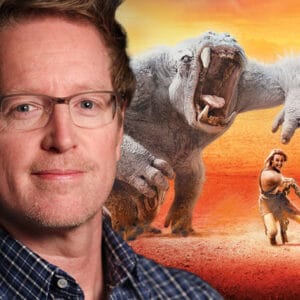
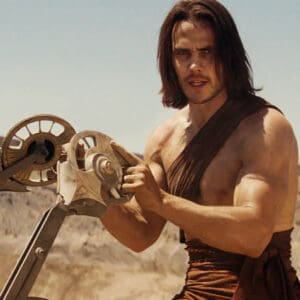

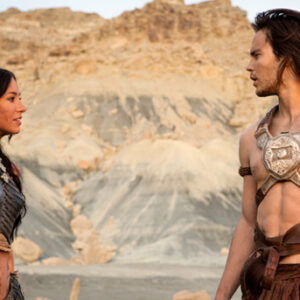
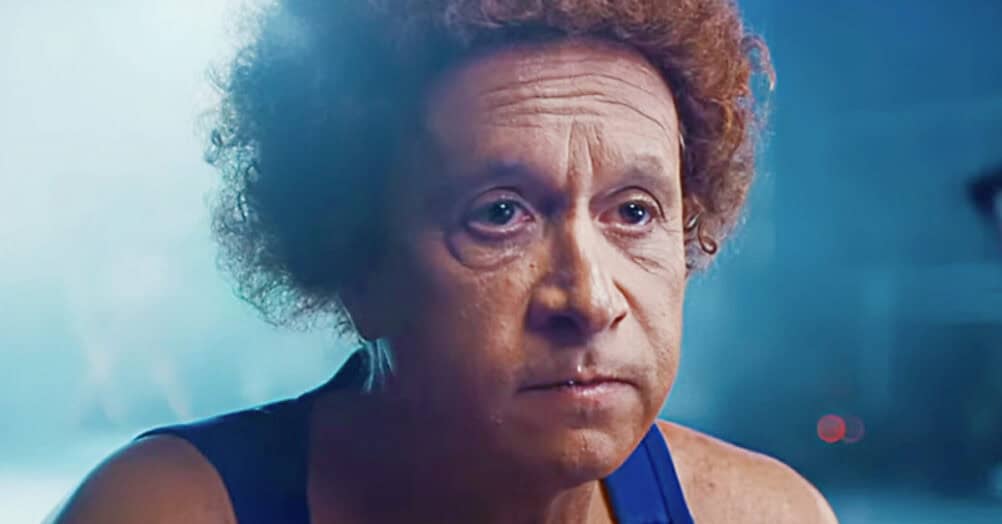
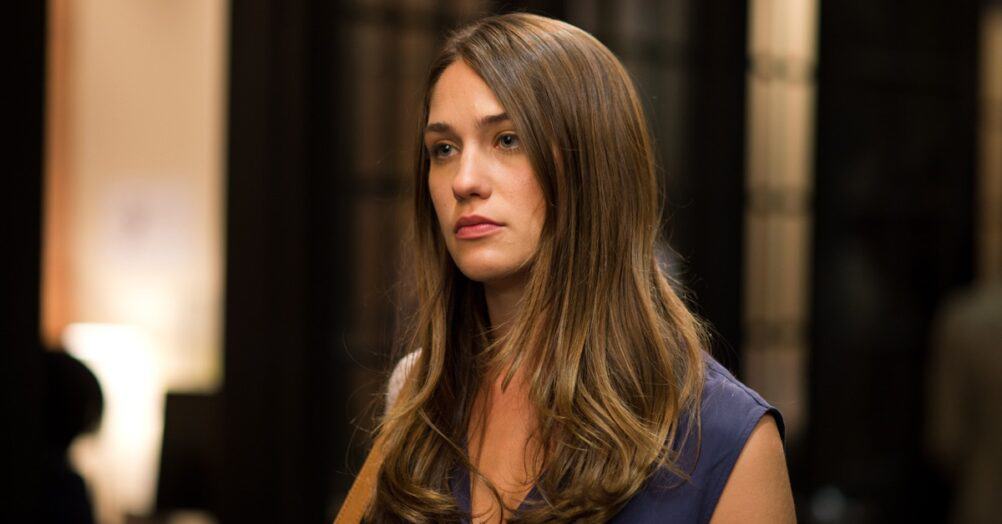
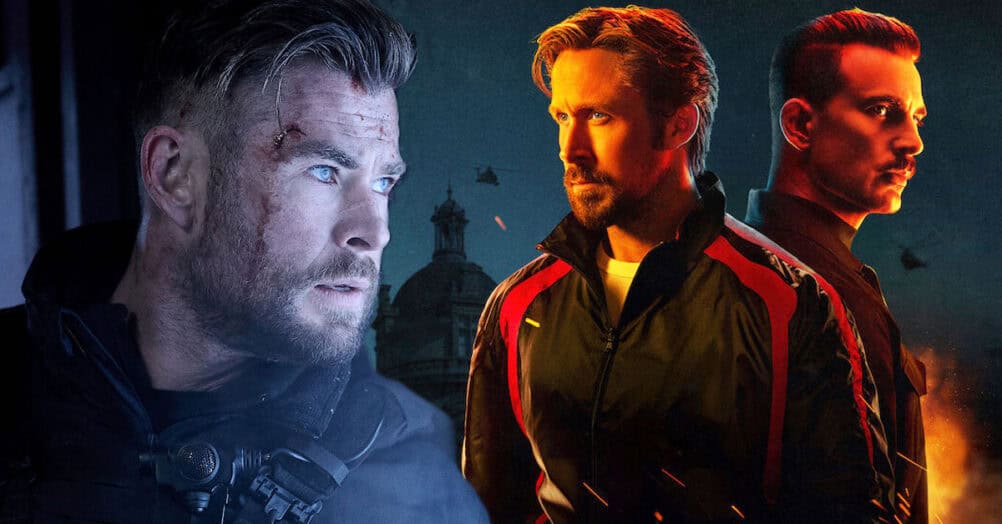

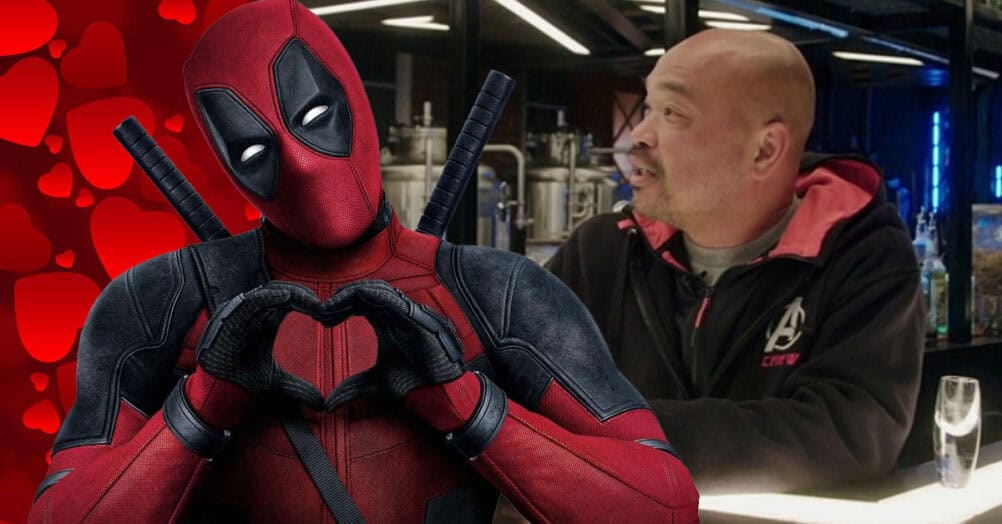
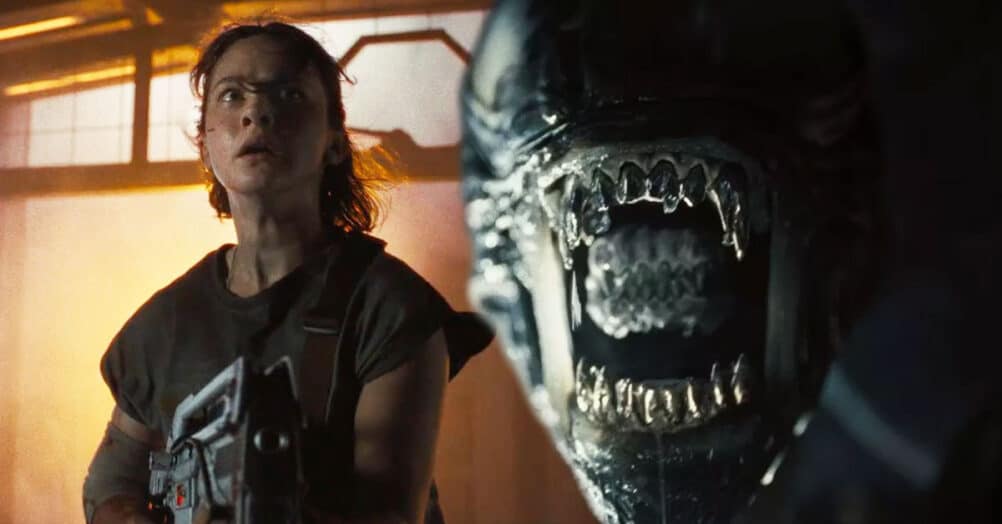
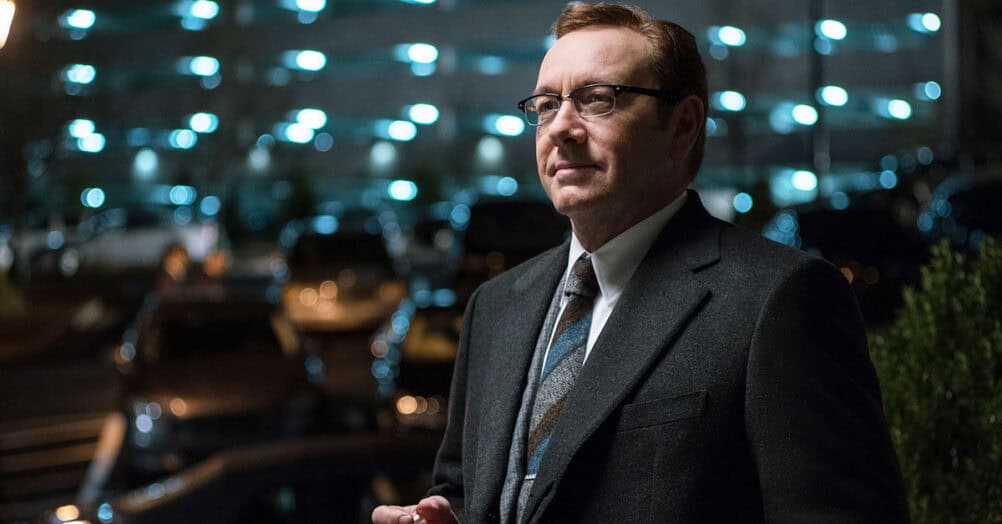


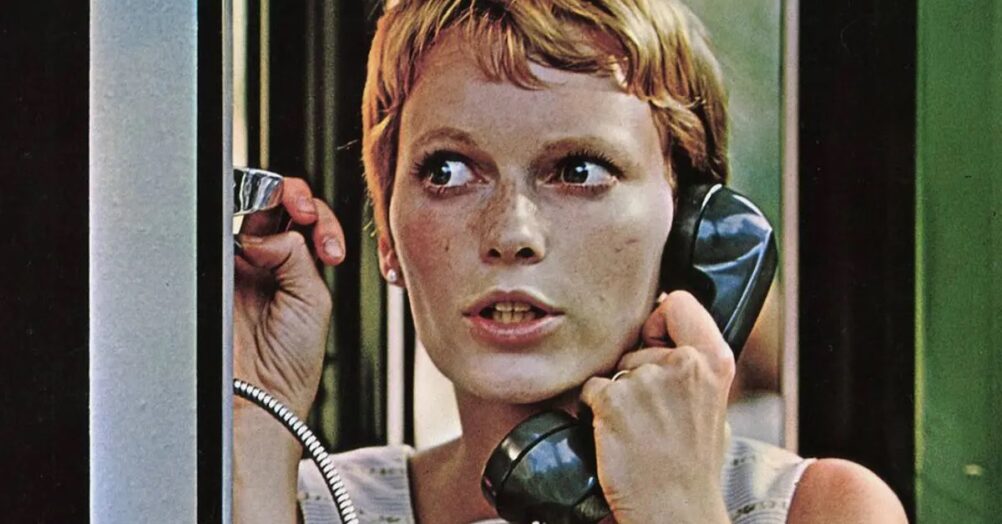
Follow the JOBLO MOVIE NETWORK
Follow us on YOUTUBE
Follow ARROW IN THE HEAD
Follow AITH on YOUTUBE